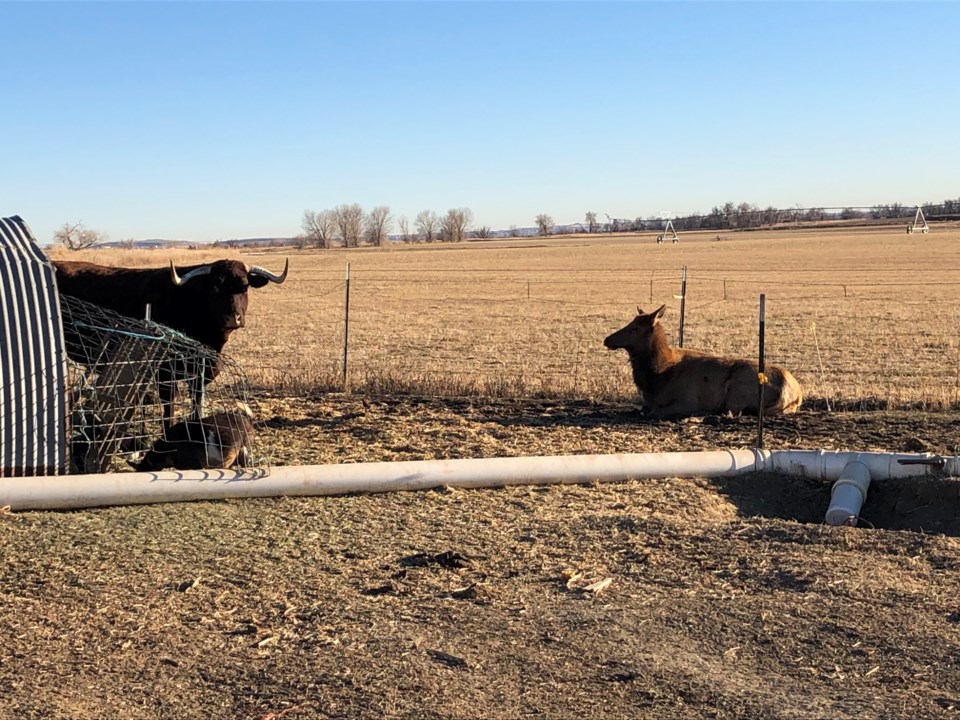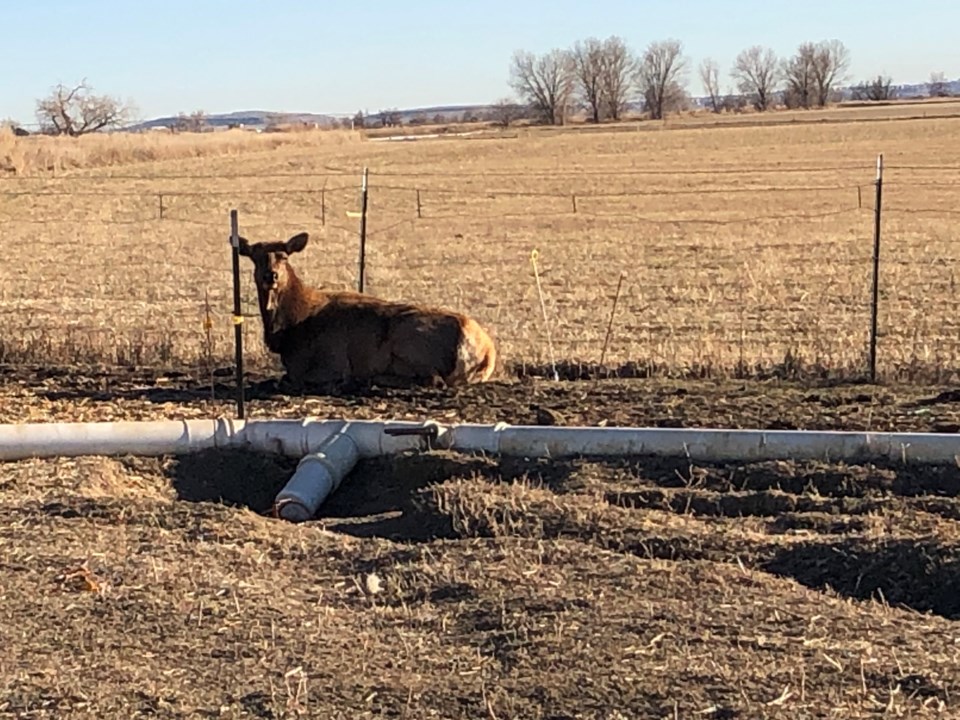At the intersection of U.S. 287 and Oxford Road lies a small farm that has been adopted by a single cow elk.
The farm is owned by Glen Schultz, who uses the property for regenerative farming.
“‘Regenerative agriculture’ describes farming and grazing practices that, among other benefits, reverse climate change by rebuilding soil organic matter and restoring degraded soil biodiversity — resulting in both carbon drawdown and improving the water cycle,” is the definition used by Regeneration International.
Schultz said he believes it's his farming practices that drew the elk, which he often refers to as “Spirit Elk,” to linger at his farm.
Spirit Elk arrived in January 2017 looking for a way to get in, Schultz said.
The fence surrounding the 6½-acre property is 4 feet tall. Elk can jump 8 feet vertically according to an article by Tyler Wilcox published on the Estes Park visitor website.
Schultz’s fence was never really an obstacle for the determined elk.
“She would jump over and then jump back but it wasn’t long until she became comfortable with just staying on this side,” Schultz said.
After the elk was seen on the property several times, Schultz said community concern grew that he was keeping her there. He received a phone call from Colorado Parks and Wildlife, which explained the do’s and don’ts when managing wildlife on private property.
“I wasn’t doing any of the don’ts,” Schultz said.
“People always ask what keeps the elk here. I’m sure everybody who has ever been around large animals or wildlife would have an opinion on that but one thing we do differently on this farm is we pay attention to the soil,” he said. “My leading theory is that she stays here on this farm because things taste better.”
He uses minerals to “excel” the soil life on his farm, causing plant life to flourish. Schultz said the minerals he adds to the soil create a balanced ecosystem that is now drawing wildlife to his property.
One theory as to how the elk found the farm is that she could smell the better grass and was drawn to it, Schultz said.
Elk have a sense of smell that is “estimated to up to 1,000 times more acute that that of a human. With a wind current traveling in their favor, elk have been known to detect odor from well over 600 yards away,” according to the Camodust website.
“She followed her nose. Elk always follow their nose,” Schultz said.
Another theory is the visitor is the calf half of a cow-calf duo that reportedly frequented nearby Panama Reservoir No. 1. The cow disappeared and when Colorado Parks, and Wildlife staff visited Schultz they said they thought Spirit Elk might be the calf, Schultz said.
“They think that she was kinda orphaned and since she kinda belonged to this area she came over here,” Schultz said.
Elk are traditionally herd animals that live in the open country, according to the Colorado Encyclopedia website. Intense exploration in 1858 to 1859 created by the Colorado gold rush caused a dramatic drop in the elk population. But by 2001 their numbers were rebounding and the elk population hit a peak of a recorded 305,000 animals. In 2018, those numbers were estimated at 287,000 according to a February report from Colorado Parks and Wildlife.
On Schultz’s farm, Spirit Elk has adopted the two oxen and goats as her herd, he said. “She is just one of the members on the farm but she is always free to come and go as she pleases.”
 "Spirit Elk" glances at an ox that stands in as part of her herd on Glen Schultz's farm. . By Courtesy photo
"Spirit Elk" glances at an ox that stands in as part of her herd on Glen Schultz's farm. . By Courtesy photo“What was interesting is they came, saw Spirit Elk, and left and she stayed. We are just a small place, yet she chooses to stay at our place. I’m not trying to attract them (the elk), but it keeps happening,” Schultz said.



